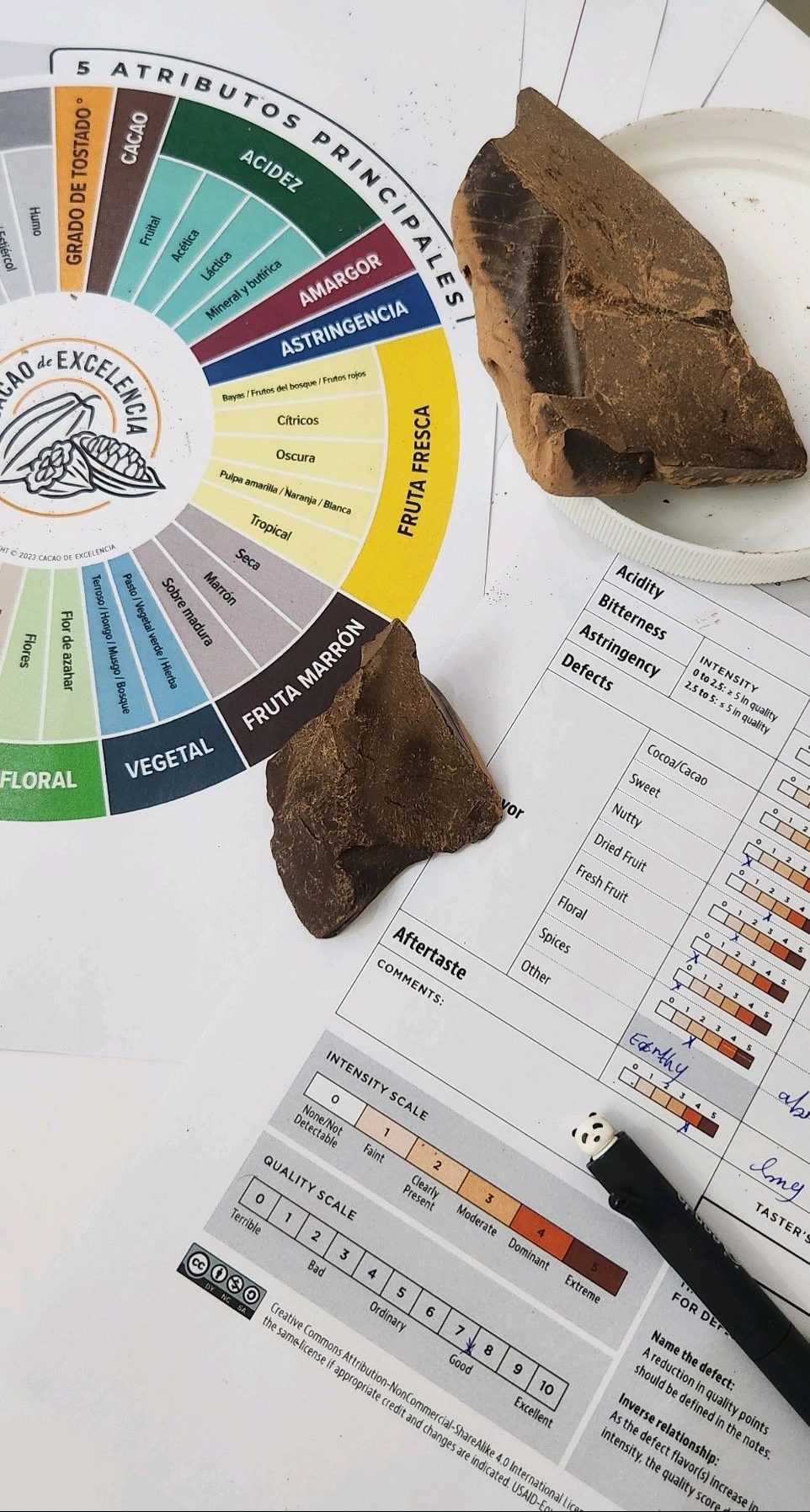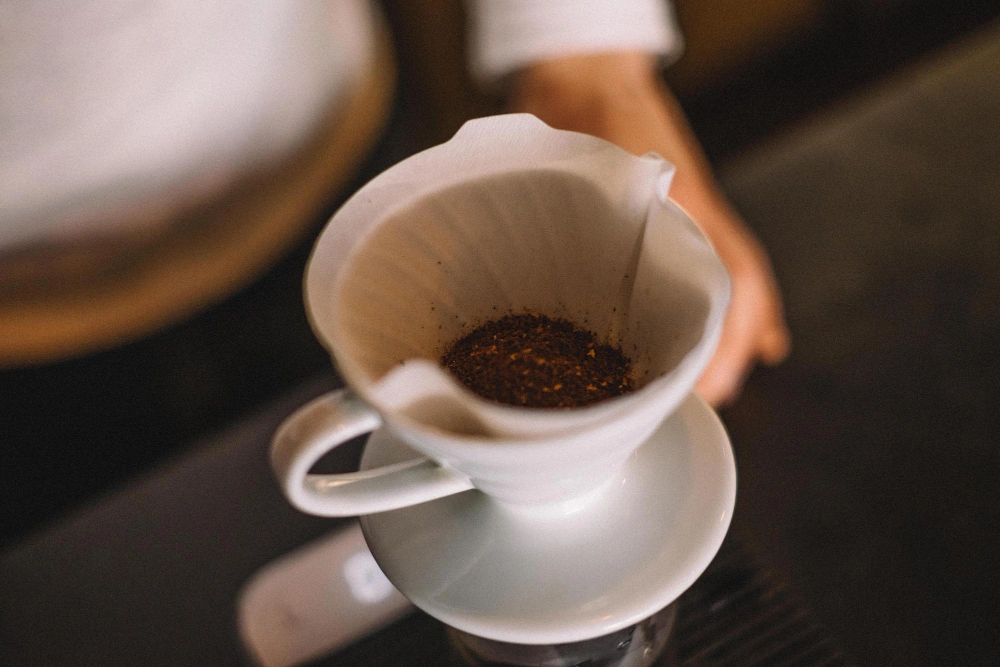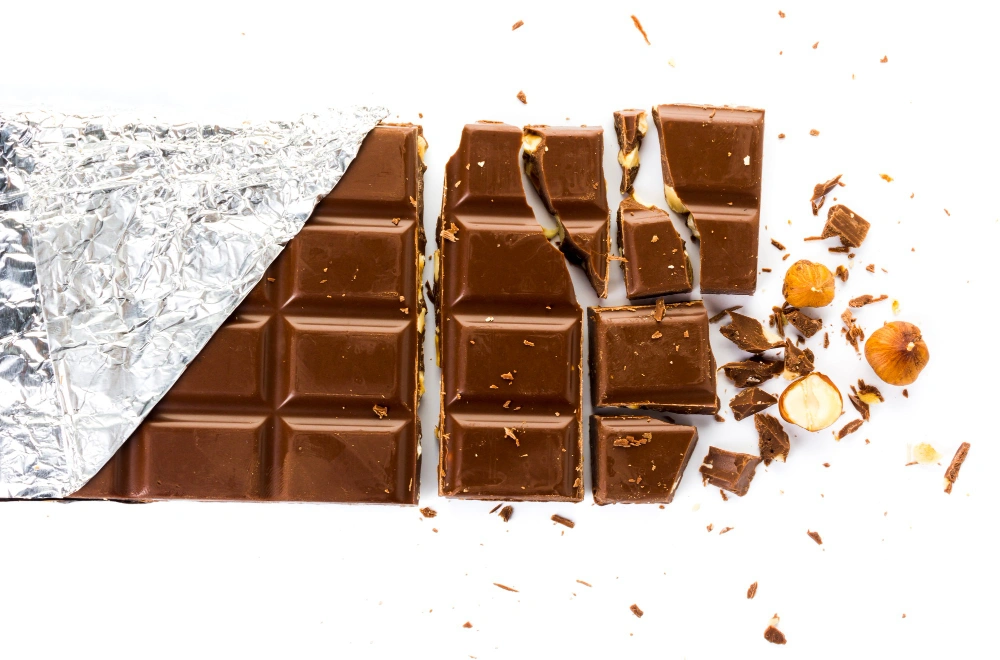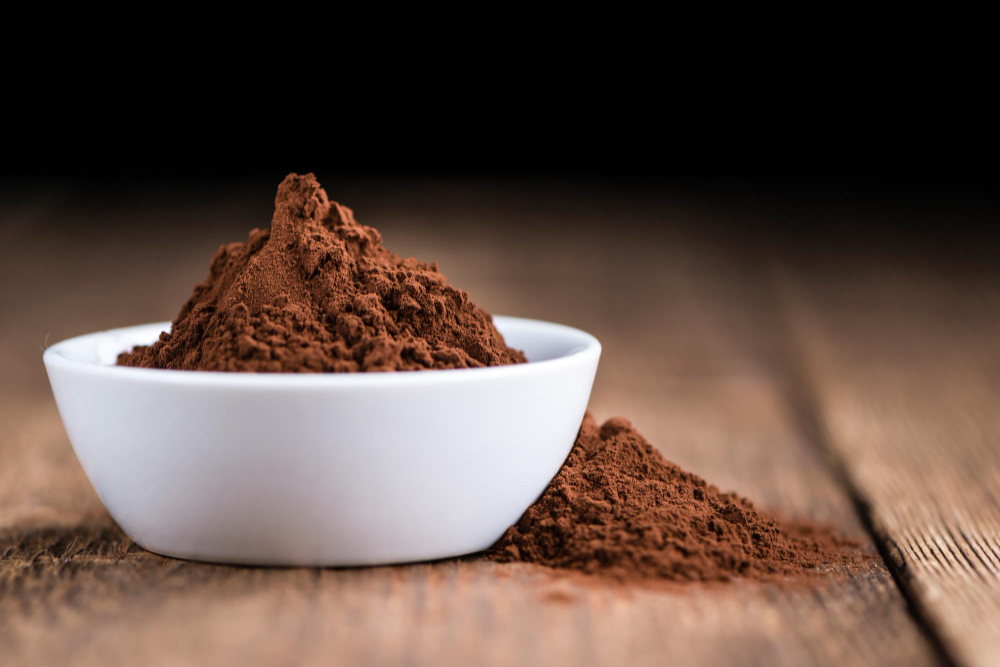Cocoa Flavor Profile: The Journey from Bean to Rich Chocolate :
When you taste chocolate, you’re actually embarking on a long sensory journey; one that begins on the cocoa farm and continues through every stage of processing until the final product reaches your palate. Understanding the cocoa flavor profile starts at the bean and develops through precise processing.
Even the type of cocoa powder used can significantly influence this journey. Knowing the factors that shape flavor helps create high-quality products and enhances the overall consumer experience.
Why Understanding This Journey Matters ?
For chocolate makers and Other chocolate products, understanding this journey means having the ability to control and predict the final flavor experience for the consumer. A simple change can result in a completely different cocoa flavor profile.
Knowing these factors transforms ingredient selection from guesswork into a strategic decision, ensuring the creation of a targeted, high-quality product.
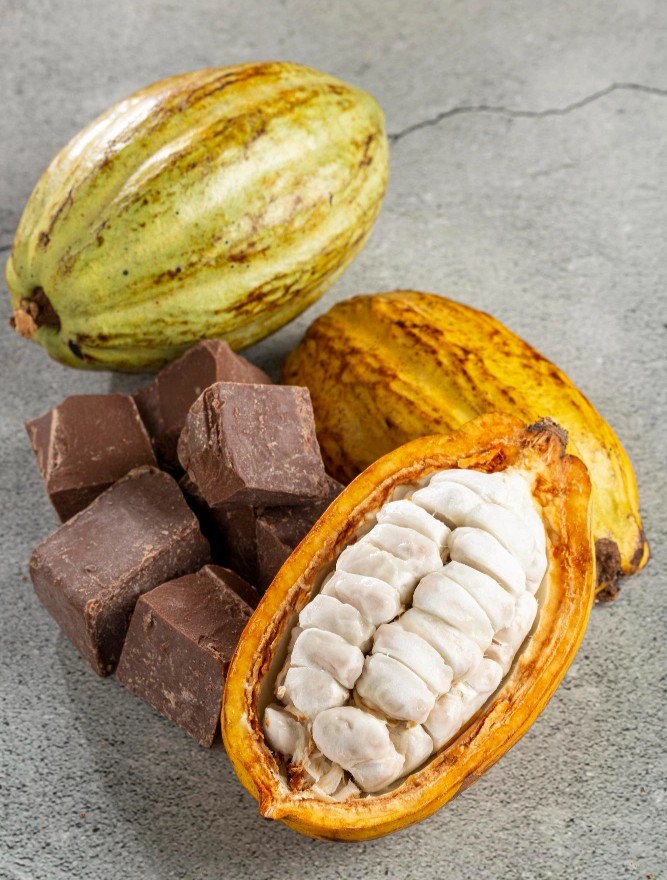
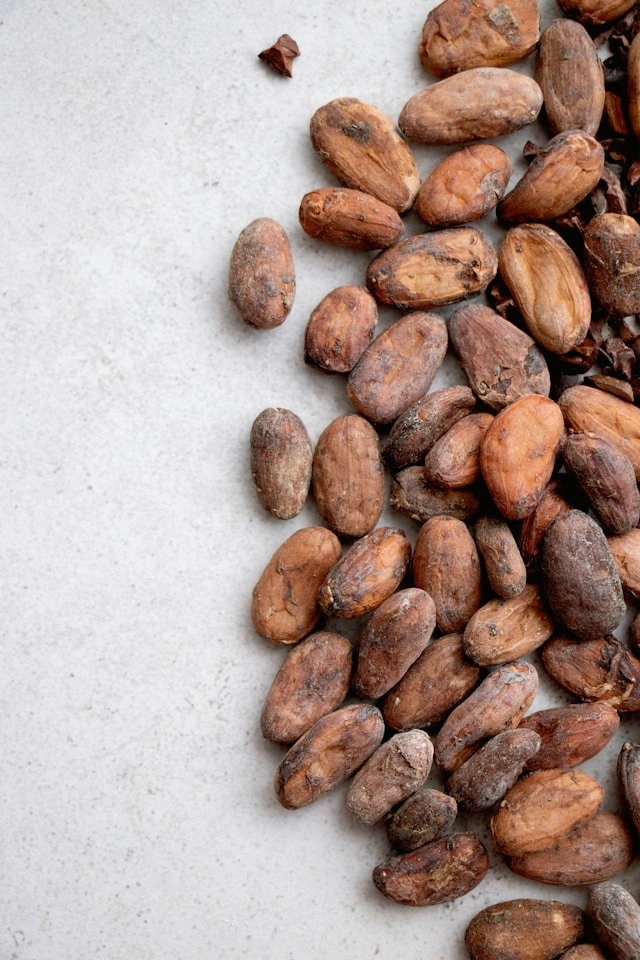
Flavor Characteristics of Each Cocoa Variety :
Criollo :
One of the rarest and most prized cocoa varieties, known for its complex cocoa flavor profile. Criollo beans feature fruity, floral, nutty, and caramel notes with mild acidity and low bitterness. These qualities make Criollo ideal for premium and fine-flavor chocolate production.
Forastero :
The most widely grown cocoa variety, Forastero has a stronger, more straightforward flavor dominated by earthy and woody notes. It offers a robust base, often used as the foundation in chocolate blends for balance and structure.
Trinitario :
A natural hybrid of Criollo and Forastero, Trinitario combines the aromatic complexity of Criollo with the strength and hardiness of Forastero. Flavor notes often include spices, fruits, and a balanced acidity, making it versatile for a range of chocolate styles.
Nacional :
Predominantly cultivated in Ecuador, Nacional is celebrated for its floral and fruity notes, often with a distinctive jasmine aroma. It is highly sought after for fine single-origin chocolates.
How Do Geographic Region and Climate Affect the Cocoa Flavor Profile ?
The geographic origin and climate directly influence the cocoa flavor profile because environmental conditions shape the bean’s chemical composition and aromatic compounds.
Climate: Temperature, humidity, and rainfall patterns impact the growth rate of cocoa beans and the synthesis of aromatic compounds. Warm, humid regions typically produce cocoa with fruity and floral notes, while drier areas tend to yield beans with more earthy and nutty flavors.
Soil Composition: Mineral content and soil structure can enhance or mute certain flavor notes. Unique soils may intensify woody or earthy characteristics, while less fertile soils may produce milder profiles.
Altitude: Higher altitudes often lead to beans with greater acidity and brighter fruit notes, while lower altitudes produce fuller-bodied, more robust flavors.
Farming Practices: Cultivation methods, harvesting techniques, and post-harvest processes like fermentation and drying all play a crucial role in shaping the cocoa flavor profile.
These factors mean that even cocoa from the same country or different estates within the same region can deliver distinctly different flavor and aroma profiles, a fact highly valued in fine-flavor chocolate production.

The Impact of Cocoa Bean Origin and Variety on Chocolate Characteristics and Cocoa Flavor Profile
The cocoa flavor profile is directly influenced by the variety of cocoa bean and the geographical conditions of its growing region. In the chocolate industry, four main varieties are recognized: Criollo, Forastero, Trinitario, and Nacional. Each variety has a distinct flavor signature and aromatic intensity. Even when grown on the same estate, differences in terroir within a single region can result in unique flavor profiles.
Which cocoa bean variety is best for a fruity flavor profile ?
Criollo beans, with their balanced acidity and aromatic fruity and floral notes, are the top choice for creating a pronounced fruity cocoa flavor profile in chocolate. Additionally, Trinitario beans grown at higher altitudes can also deliver distinctive, vibrant fruit notes.
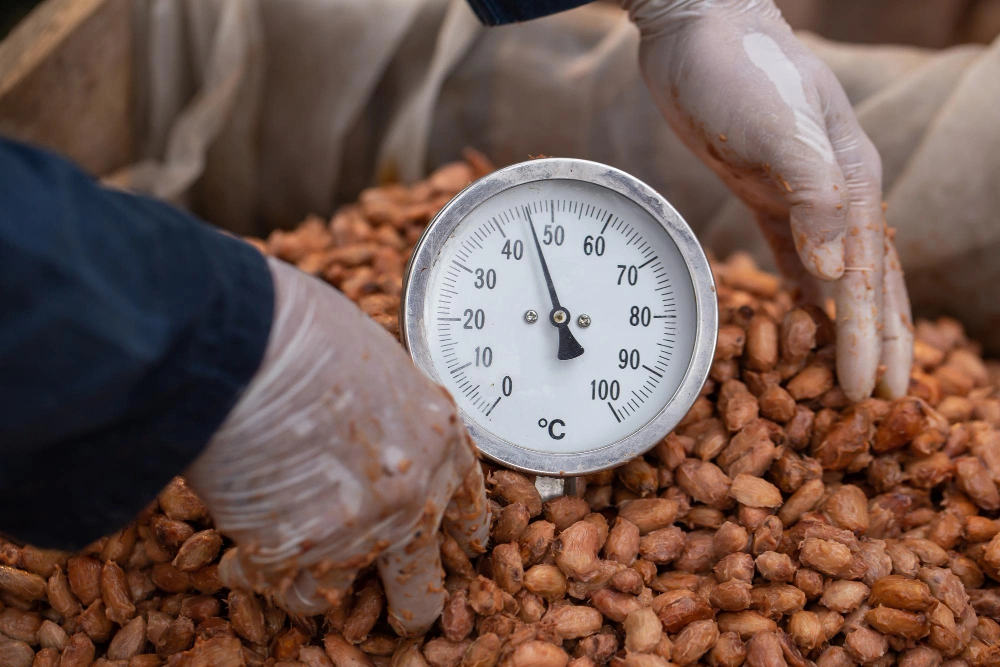
Roasting – Creating Depth in Chocolatey and Caramel Notes
Roasting is the final major step before grinding the cocoa beans, and it plays a crucial role in flavor development. Through Maillard reactions and caramelization, roasting intensifies chocolatey, caramel, and sometimes woody or smoky notes. Light roasting preserves fruity and acidic tones, while darker roasting creates richer, more bitter profiles with deep chocolate and caramel flavors. The roasting time and temperature are adjusted based on the bean’s origin and desired cocoa flavor profile.
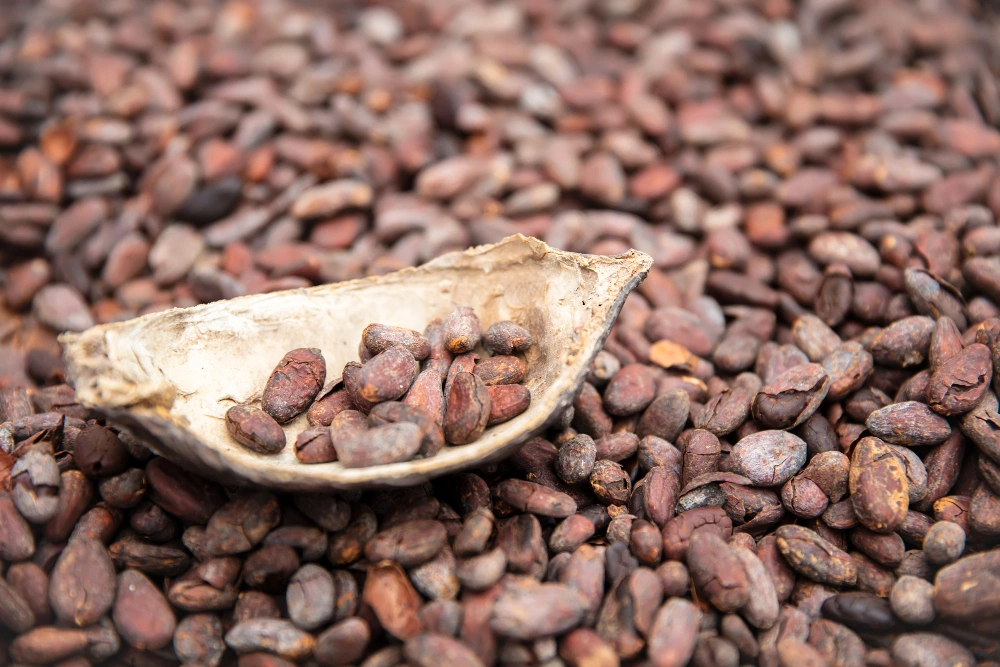
Fermentation – Developing Fruity and Floral Notes
The cocoa fermentation process begins immediately after harvest and typically lasts 3 to 7 days. During this time, naturally occurring microorganisms convert the sugars in the pulp into acids and alcohol. These reactions create fruity, floral, and sometimes nutty flavor precursors, forming the foundation of the cocoa flavor profile. Controlled fermentation is critical; insufficient fermentation can leave raw, astringent flavors, while over-fermentation can produce undesirable sour or musty notes. Temperature and timing are key to achieving a balanced flavor.
Drying – Stabilizing Aroma and Flavor
After fermentation, cocoa beans must be dried to a moisture content of 6–7%. This stage stabilizes the aromatic compounds developed during fermentation and prevents mold growth. Traditional sun drying is common, while industrial production may use mechanical dryers to control temperature and airflow. The speed and uniformity of drying directly affect the stability and longevity of the cocoa’s aroma and flavor.
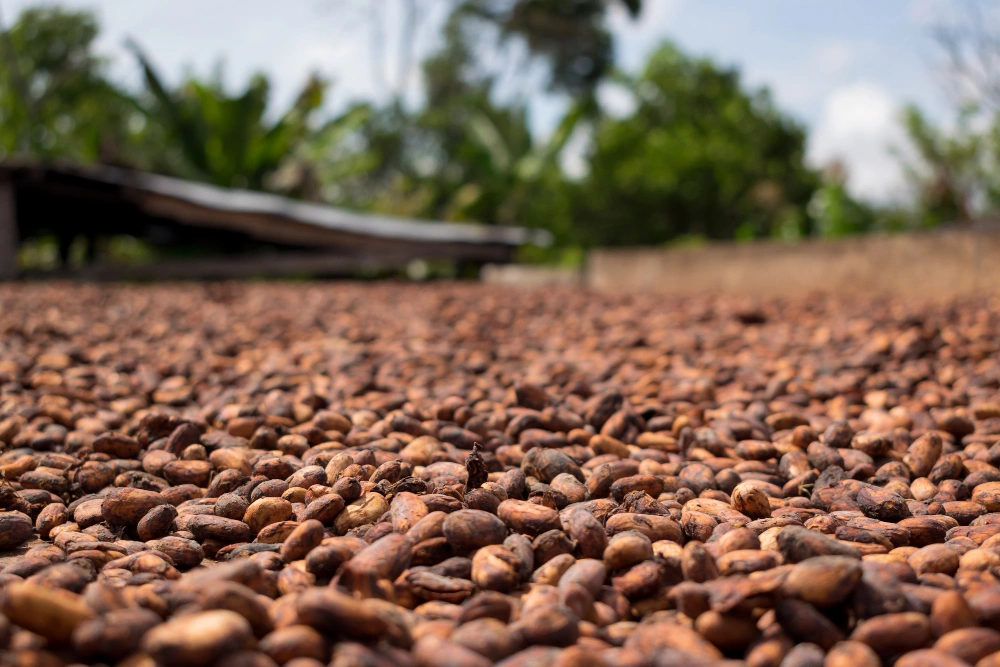
Which post-harvest stage has the greatest impact on the cocoa flavor profile and chocolate quality?
All three stag ( fermentation, drying and roasting ) play a critical role, but most experts consider fermentation the most crucial. It lays the foundation for fruity, floral, nutty, and cocoa notes, influencing all subsequent processes. However, the quality of drying and the intensity of roasting can also significantly shape the final flavor and prevent defects.
Key Post-Harvest Stages and Their Impact on the Cocoa Flavor Profile :
In the chocolate production process, the steps after the cocoa beans are harvested are of particular importance. These steps include fermentation, drying, and roasting of the beans, each of which directly affects the final quality of the chocolate. These steps are described in detail below.
Chocolate Production Process :
In the chocolate production process, several issues can directly impact the final quality. The key stages that have a significant effect on chocolate quality include:
Tempering: Precisely controlling the temperature to create a stable crystalline structure in cocoa, which enhances gloss, texture, and prevents the formation of fat bloom.
Conching: A process to improve texture and flavor quality, which also helps in developing aroma notes and creates a desirable mouthfeel.
Ultimately, production stages involve temperature and time control, which influence the quality and characteristics of the chocolate. These stages can lead to dryness and flavor development, making precise process control essential.
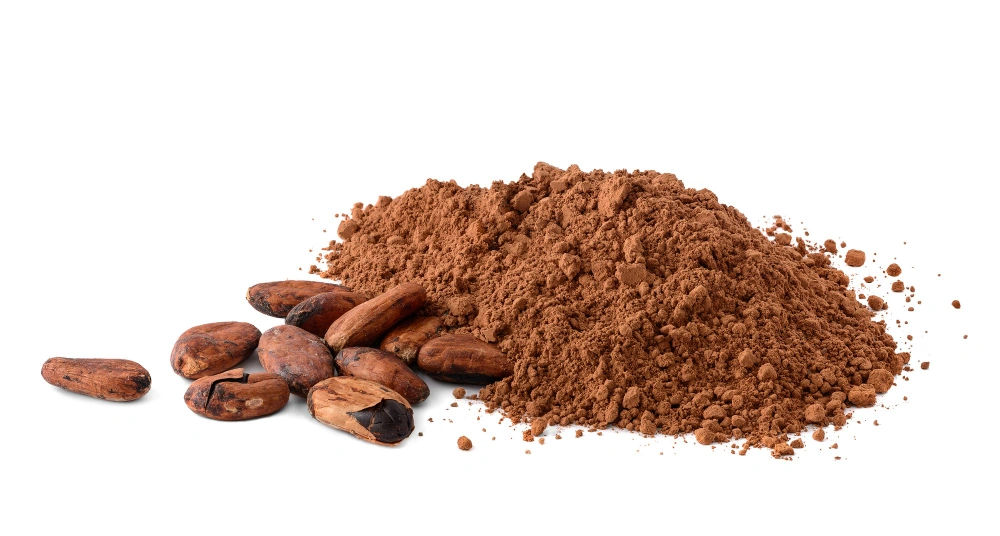
Technical Parameters Affecting Flavor :
- Fat Content: Higher fat levels (20–22%) create a smoother texture and a richer, more indulgent flavor.
- Ash Content: This is an indicator of mineral and impurity levels; excessive ash can cause dullness in both flavor and color.
- Particle Size: Finer particles improve solubility, enhance flavor integration, and contribute to a more uniform mouthfeel.
Three Key Factors Shaping the Cocoa Flavor Profile :
- Origin & Variety of Beans: Determines the base flavor notes.
Post-Harvest Processes: Fermentation, drying and roasting; essential for developing and stabilizing aromas.
Powder Processing Method: Differences between natural and alkalized cocoa powders in color, pH, and flavor intensity.
Determination of color and pH in the cocoa powder production process
In cocoa powder production, pH and its changes have a direct impact on the final flavor of the product.
The use of alkaline solutions in the production process changes and improves the flavor. In addition, alkalization directly affects the color of the cocoa powder.
Low pH (5.0–6.0): Higher acidity with fruity and tangy notes; lighter brown color; sharper taste.
Medium pH (6.5–7.0): Balanced flavor with mild caramel notes; reddish-brown color; reduced acidity.
High pH (7.0–8.0): Lower acidity with earthy and caramel tones; darker brown color.
Very high pH (+8.2): Neutral cocoa flavor.
Alkalizing Process and Its Impact on Flavor
Alkalizing, also known as Dutch processing, involves treating cocoa with an alkaline solution. This process increases pH, darkens the color (from light brown to deep red or black), and softens acidity, creating a rounder, smoother flavor profile.
Alkalized cocoa is widely used in dark chocolates, hot cocoa mixes, and products that require deep color and a mellow taste.
Key purposes of alkalizing:
Reduce acidity and remove undesirable sourness or bitterness.
Broaden the color range from light brown to deep red or black.
Enhance caramel and earthy flavor notes while adding richness to the mouthfeel.

What is the difference between natural cocoa powder and alkalized cocoa powder ?
Natural cocoa powder has a lower pH, giving it a lighter color, brighter fruit notes, and higher acidity. Alkalized (Dutch-processed) cocoa powder has a higher pH, resulting in a darker color, smoother texture, and a milder, rounder chocolate flavor.
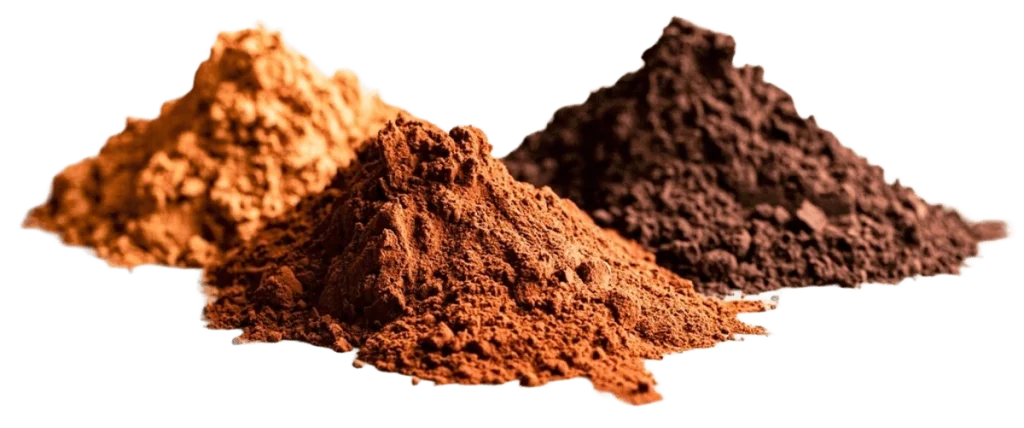
What Is Cocoa Powder Alkalization (Dutching) and Why Does It Matter ?
It is a process that uses alkaline solutions to alter the structure of cocoa, changing its color, flavor and stability This process improves the overall quality of the final product.
To learn how different types of alkalis affect the final product quality, read here.
- Related articles
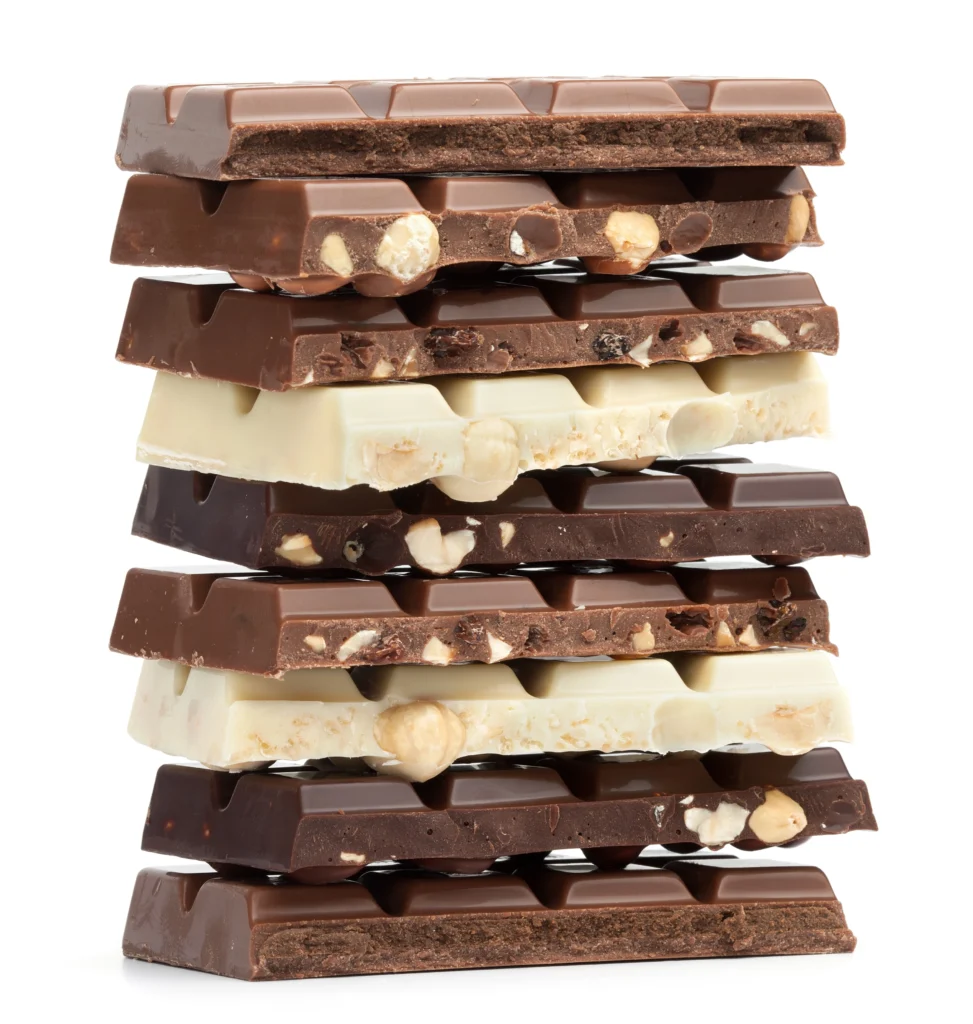
Cocoa Flavor Wheel and Flavor Note Categories
The Cocoa Flavor Wheel is a visual and standardized tool for identifying and describing the flavor notes and aromatic characteristics of chocolate. It helps tasters, producers, and even enthusiasts communicate more precisely and consistently, ensuring a shared language when discussing cocoa flavor profiles and improving product comparisons.
Flavor Characteristics of Cocoa Bean Varieties :
- Criollo : Mild, with fruity, floral, and caramel notes.
- Forastero : Strong, earthy, and robust.
- Trinitario : A balanced mix of earthy, fruity, and spicy notes.
- Nacional : Sweet and floral, with jasmine-like aromas.
1. White Chocolate
Flavor Profile: Sweet, creamy, milky, with caramel and vanilla notes.
Aromatic Notes: Boiled milk, honey, almond.
Applications: Cream-based desserts, ganache, and mild-flavored confections.
2. Milk Chocolate
Flavor Profile: Balanced sweetness with milky, vanilla, and caramel undertones.
Aromatic Notes: Cocoa butter, coffee cream, malt.
Applications: Confectionery bars, beverages, and general-purpose chocolate.
3. Dark Chocolate
Flavor Profile: Ranges from mild bitterness to intense, with dry cocoa and earthy notes.
Aromatic Notes: Roasted cocoa, wood, spices, occasional smokiness.
Applications: Premium chocolate bars, pralines, and dark chocolate desserts.
4. Single-Origin Chocolate
Flavor Profile: Broad spectrum, from fruity and floral to acidic, depending on bean origin.
Aromatic Notes: Distinctive flavors tied to terroir, such as tropical fruits or floral notes.
Applications: Premium tasting chocolates, sensory evaluation, and origin-specific branding.
How to Describe the Flavor of Chocolate
To accurately describe the sensory experience of chocolate, attention should be given to its aroma, taste, and texture. Using the Cocoa Flavor Wheel, chocolates can be categorized into the following flavor profiles and aromatic notes:

4. Smell – Evaluating Aromatic Notes in Chocolate and Cocoa Powder
Aroma is one of the most important indicators of chocolate quality, influenced by the cocoa bean variety, fermentation, roasting, and the composition of aromatic compounds.
Two main aroma evaluation methods:
Orthonasal : Direct inhalation through the nose to detect primary notes such as vanilla, caramel, fruity, floral, nutty, or smoky.
Retronasal : Perceiving complex aromas while tasting, identifying secondary notes like bitterness, fruity acidity, nuttiness, and spices (e.g., cinnamon).
Tip : To reset your sense of smell between samples, inhale a neutral scent such as coffee beans or your own skin.
3. Listen – Evaluating the Snap of Chocolate
The sound of chocolate breaking is an important quality indicator. Properly tempered chocolate produces a sharp, clean snap when broken, indicating:
Correct cocoa butter crystal structure.
Accurate and consistent processing.
A dense, stable texture.
Chocolate lacking this feature may be overly soft, brittle or have lower quality in terms of texture and processing.


5. Taste – Evaluating the Flavor and Structure of Chocolate and Cocoa Powder
Chocolate flavor is a combination of sweetness, bitterness, acidity, and umami, influenced by the bean’s origin, processing methods, and formulation.
Main flavor categories in the Cocoa Flavor Wheel :
Chocolatey: Deep cocoa richness and intensity found in various chocolate products.
Bitter: Strong, sharp flavors, often present in high-percentage dark chocolates.
Acidic: Bright, tangy notes typically developed during fermentation, adding vibrancy.
Fruity: Ranging from red berries to dried fruits, these notes can be mild or pronounced depending on origin and processing.
Floral: Delicate aromas reminiscent of flowers, often associated with Nacional or Criollo beans.
Woody: Earthy and woody tones that contribute depth and lingering complexity.
Evaluation Method :
With nose closed, identify basic tastes like sweetness, bitterness, or acidity.
Then breathe in to detect complex aromatic notes via retronasal perception.
Assess mouthfeel—how the chocolate melts, its texture, and richness.
Evaluate the aftertaste—the lingering flavors and their duration.

1. Look – Visual Examination of Chocolate
The appearance of chocolate is the first quality indicator. High-quality chocolate and cocoa powder should have a smooth, glossy, and uniform surface. Defects such as fat bloom or sugar bloom may signal issues with processing or storage.
For accurate evaluation, place the chocolate or cocoa powder on a white surface under proper lighting to assess color intensity and uniformity.
2. Touch – Assessing Texture and Mouthfeel
The sound of chocolate breaking is an important quality indicator. Properly tempered chocolate produces a sharp, clean snap when broken, indicating:
Correct cocoa butter crystal structure.
Accurate and consistent processing.
A dense, stable texture.
Chocolate lacking this feature may be overly soft, brittle, or have lower quality in terms of texture and processing.
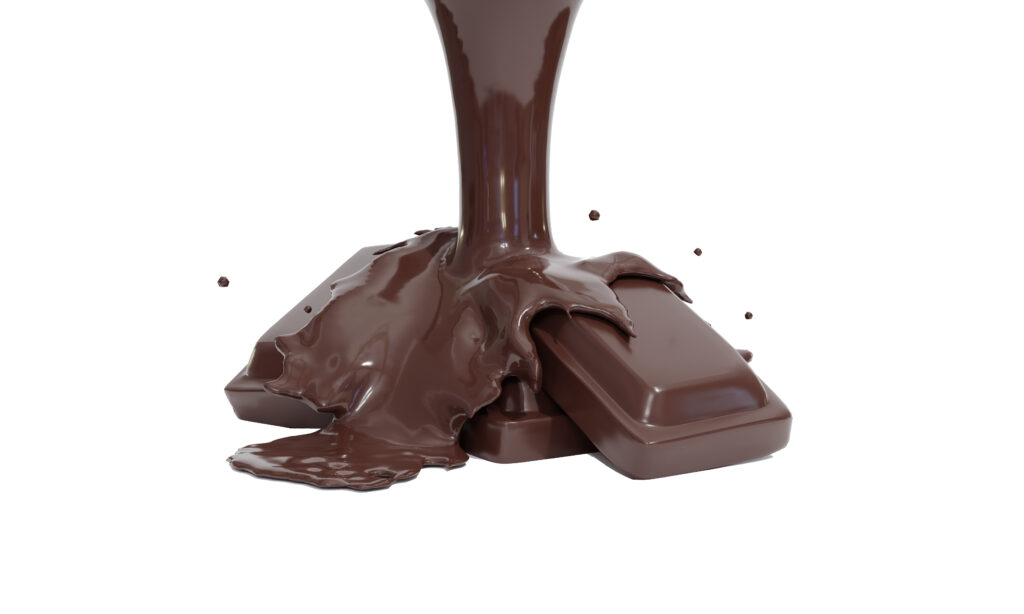
Sensory Evaluation Process for Chocolate
Sensory evaluation of chocolate is a scientific and systematic method that uses five main senses (sight, touch, hearing, smell, and taste) to assess the quality, texture, and flavor profile of chocolate and cocoa powder. This approach helps evaluators, researchers, and product developers precisely analyze and refine chocolate flavor profiles.
How Can I Choose the Best Cocoa Powder for My Product ?
The wrong cocoa powder can ruin your entire formulation. To ensure the best flavor, color, and texture in your final product, choose the best option suited to your formulation and target market with the help of Our Expert Team 📞.

